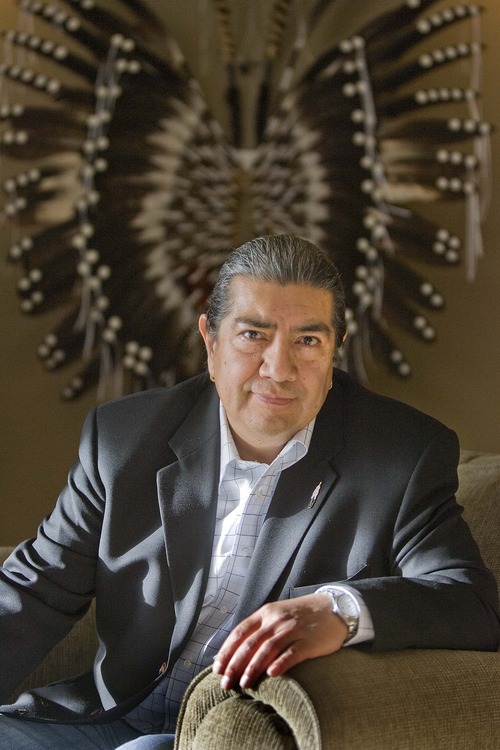This is an archived article that was published on sltrib.com in 2013, and information in the article may be outdated. It is provided only for personal research purposes and may not be reprinted.
I have always been on the side of righting the wrong when it comes to racial and ethnic injustices. I have always opposed logos that are disrespectful of native peoples. However, when it comes to the University of Utah nickname and circle/feather logo, which I find to be very tasteful, I take prideful exception.
Why? With the exception of the University of Utah nickname, what other landmark is there to suggest that any indigenous people inhabited the Salt Lake Valley prior to Mormon settlement? And even though the state is named after the Ute Indians, hardly anyone knows that.
Nor does it carry much meaning. My observation is the history of the Ute and other tribes of Utah are ignored for the most part or hardly taught in public schools in earnest or with any sense of accuracy.
I take major exception with some students at the U., the Indigenous Students and Allies for Change, who have gathered signatures in support of dropping the drum and feather for good. These students and some faculty (many of whom are not from the state of Utah) are demonstrating disrespect by opposing and totally disregarding the sovereign rights of the Ute Indian Tribe. The Tribe has authorized the University to use the Ute nickname over the years and is currently in negotiations with the University to renew and build upon this relationship with the school.
Samantha Eldridge, a Ph.D. student, instructor in political science and member of the Navajo tribe and co-chairwoman of the group, told the Daily Utah Chronicle that "students abuse the name and logo in their dress and conduct at sporting events and that American Indian students struggle when they see their culture misrepresented by red-faced fans wearing eagle feather headdresses."
While war paint and feathers (and I doubt they are eagle feathers, as it is illegal for non-Indians to possess them) have been inappropriately displayed by some non-Indians at sporting events, my observation is that it is manageable; they are few in number and can be educated to overcome their ignorance. And this is the whole point: This is an opportunity for the university to educate the community about the histories and cultures of the native peoples of this state.
I take exception to Miss Eldridge's statement, "Students felt unsafe on campus, and students felt like they couldn't go to football games." I have observed plenty of Indian students in attendance at these games and they did not appear to be afraid. Miss Eldridge does not speak for all native people, and certainly not for me and members of my tribe. Only the Ute Tribal Business Committee officially speaks for the Utes.
Matthew Makomenaw of the Odawa tribe, director of the American Indian Resource Center at the U., cited empirical research showing that the use of American Indian names as mascots perpetuates negative stereotypes of American Indians and low self-esteem in American Indian students. That's nothing.
What really hurts native youth is to have their true history and historical presence totally ignored and invisible. Then, when it is presented, it is slanted and misrepresented. This is what the students should be fighting against!
I am troubled that the University of Utah administration has not done more to better inform the university community of the native peoples of the state to curb the disrespectful behavior of some of the U. fans. Again, I see this as an opportunity to education the greater community about the native peoples. After all, isn't that the purpose of the university?
Forrest S. Cuch is a Ute tribe member and editor of "A History of Utah's American Indians."



